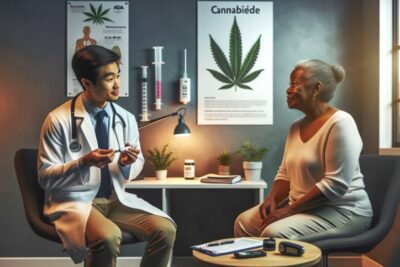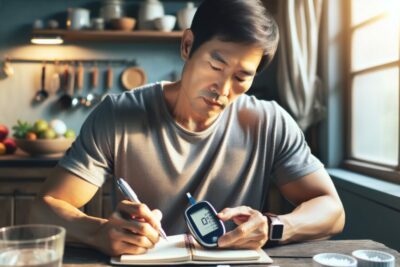
When it comes to diabetic emergencies, being prepared is key. Understanding how to respond can make a significant difference in the outcome for someone with diabetes. With the right knowledge, you can provide essential aid and potentially save a life.
Diabetic emergencies can be frightening, but by learning to recognize the symptoms and knowing the appropriate steps to take, you can calmly and effectively manage these situations. The following guide offers crucial information on how to care for people with diabetes during these critical times.
🔍 Seeking a breakthrough in Type 2 Diabetes management?
Discover our expert insights and innovative approaches on ‘How to Cure Diabetes’.
Click to transform your health journey today!
What you\'ll find in this article?
- What Is a Diabetic Emergency?
- Recognizing the Symptoms of a Diabetic Emergency
- Immediate Steps to Take During a Diabetic Emergency
- How to Treat Low Blood Sugar (Hypoglycemia)
- How to Treat High Blood Sugar (Hyperglycemia)
- When to Call Emergency Services
- Preventing Diabetic Emergencies
- First Aid Tips for Diabetic Emergencies
- Essential Guide to Caring for People with Diabetes in Emergency Situations
- Questions Related to Diabetic Emergencies
What Is a Diabetic Emergency?
Diabetic emergencies arise when blood sugar levels become dangerously high or low, disrupting the normal functioning of the body. These situations require immediate attention to prevent serious complications, or even death.
A diabetic emergency can include hypoglycemia, which is low blood sugar, or hyperglycemia, which is high blood sugar. It's essential for emergency workers and caretakers to recognize these conditions quickly.
People with diabetes should always be prepared for such emergencies, carrying appropriate medical identification and supplies to help manage their blood sugar levels.
Explore our specialized services in diabetes care 🌟.
From personalized diet plans to effective exercise routines, we have what you need to take control of Type 2 Diabetes.
Visit our services page now!










Recognizing the Symptoms of a Diabetic Emergency
Being able to identify the symptoms of a diabetic emergency is critical. For hypoglycemia, look for signs such as shaking, sweating, confusion, and irritability. Hyperglycemia symptoms include frequent urination, increased thirst, and blurred vision.
Other symptoms may include a rapid heartbeat, weakness, and dizziness. In some cases, the person may lose consciousness or experience seizures. It's crucial to act quickly if you observe any of these symptoms.
Remember, recognizing diabetic symptoms promptly can be the difference between a manageable situation and a life-threatening crisis.
Immediate Steps to Take During a Diabetic Emergency
When faced with a diabetic emergency, the first step is to check the consciousness of the person. If they are conscious and able to swallow, provide them with a source of fast-acting sugar. If unconscious, do not give them anything by mouth and prepare to administer glucagon if you are trained to do so.
It's important to monitor their symptoms and be ready to adjust your approach as needed. If there's any doubt about what to do, don't hesitate to call for emergency help.
Always keep a diabetic emergency kit on hand, which should include glucose tablets, a glucagon injection kit, and other essential supplies.
How to Treat Low Blood Sugar (Hypoglycemia)
Treating low blood sugar promptly is essential. Offer a fast-acting carbohydrate like fruit juice, glucose tablets, or hard candy. Afterwards, provide a snack with protein to stabilize their levels.
- Check blood sugar levels every 15 minutes until they are stable.
- Encourage the person to rest as their sugar levels normalize.
- Seek medical attention if there's no improvement.
How to Treat High Blood Sugar (Hyperglycemia)
For high blood sugar, the main goal is to lower it safely. This can often be done by administering insulin, as prescribed by a healthcare professional. Encouraging hydration with water can also help to lower sugar levels.
If the person has a continuous glucose monitor (CGM) or insulin pump, check that they are functioning properly. Do not exercise as it could raise blood sugar levels even further in the case of hyperglycemia.
If ketones are present or if there's any confusion about what to do, seek medical help immediately.
When to Call Emergency Services
Call emergency services if the person with diabetes is unresponsive, having a seizure, or if you're unable to safely manage their symptoms. Also, call if there's no improvement after treatment for hypoglycemia or if their blood sugar is consistently too high.
Being aware of when to seek professional help is a vital component of managing diabetes in emergencies.
Providing emergency responders with all necessary information about the person's diabetes can help them receive the best care possible.
Preventing Diabetic Emergencies
Preventing diabetes emergencies is always preferable to treating them. Regular monitoring of blood sugar levels, proper medication management, and having a plan in place are key strategies.
- Maintain a balanced diet and regular exercise routine.
- Stay hydrated and avoid excessive alcohol.
- Educate friends and family on how to recognize and respond to symptoms.
First Aid Tips for Diabetic Emergencies
First aid for diabetic emergencies includes recognizing symptoms early, providing appropriate sugar sources for hypoglycemia, and not administering anything by mouth to an unconscious person. Keep calm and offer reassurance to the person affected.
Understanding these first aid steps can give you confidence in managing diabetic emergencies effectively.
Always follow up with a healthcare provider after an emergency to adjust the treatment plan if necessary.
Essential Guide to Caring for People with Diabetes in Emergency Situations
Providing care for people with diabetes in emergency situations goes beyond immediate response. It involves a comprehensive understanding of their medical history, current treatment, and potential complications.
This essential guide is designed to equip you with the knowledge to support individuals with diabetes when they need it most, ensuring their safety and well-being during emergencies.
What Should I Do If Someone Is Having a Diabetic Emergency?
First, assess the situation to determine if it's hypoglycemia or hyperglycemia. Provide suitable sugar sources or administer insulin as required. Call emergency services if necessary and stay with the person until help arrives.
It's crucial to remain calm and act swiftly to manage the emergency effectively.
How Does the ER Treat Diabetes?
Emergency rooms treat diabetes by first stabilizing the person's blood sugar levels. They may administer insulin or glucose intravenously and monitor vital signs closely. The ER will also address any complications that may have arisen from the diabetic emergency.
Following stabilization, the emergency team will often consult with the patient's regular healthcare provider for ongoing diabetes management.
How Much Sugar Should You Give a Diabetic in an Emergency?
For a hypoglycemic emergency, give about 15 grams of fast-acting carbohydrates initially. This can be in the form of glucose gel, four ounces of fruit juice, or regular soda. Recheck the blood sugar after 15 minutes and repeat if necessary.
It's important not to over-treat as this can cause blood sugar to rise too high.
What Kind of Support Is Available for People with Diabetes?
Support for people with diabetes includes educational resources, support groups, and access to healthcare professionals specialized in diabetes care. Many communities also offer programs to help manage diabetes effectively.
Utilize these resources to stay informed and connected, as managing diabetes is a continuous process.
For a visual understanding of how to manage a diabetic emergency, watch this helpful video:
Remember, being knowledgeable about caring for people with diabetes in emergency situations can make all the difference. Stay prepared, stay informed, and you can be a vital support in someone's time of need.
✨ Other articles you might be interested in:
- Diabetes diagnosis & tests: Understanding ADA's guidelines
- 4 easy ways to help manage diabetes care costs
- Understanding Forced Nonmedical Switching | ADA Compliance and Patient Rights
- Understanding Health Insurance Aid & Diabetes | ADA Support Options
- Understanding A1C and eAG: Key Measures for Diabetes Control


